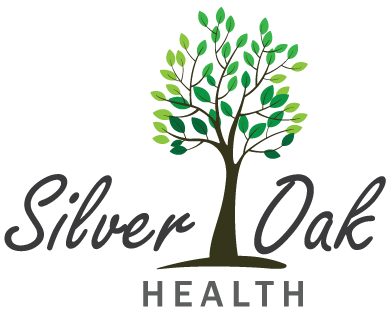A CRITICAL EXAMINATION OF THE SUPREME COURT'S LANDMARK RULING ON WORKPLACE SAFETY: ARE WE TRULY ADVANCING?
The recent Supreme Court ruling in response to the tragic death of a trainee doctor at R.G. Kar Medical College marks a significant moment in the evolution of workplace safety standards in India. This judgment, issued considering the distressing incident, underscores a judicial commitment to not only addressing immediate safety concerns but also tackling systemic deficiencies that have persisted despite previous legal advancements.
The Supreme Court’s ruling is framed within a broader legal context that includes pivotal cases such as Vishaka v. State of Rajasthan (1997) and Medha Kotwal-Lele v. Union of India (2013). The Vishaka case established critical guidelines for addressing sexual harassment in the workplace, which were later codified into the Sexual Harassment of Women at Workplace (Prevention, Prohibition, and Redressal) Act, 2013. Medha Kotwal-Lele further emphasized the necessity for effective implementation of these guidelines, mandating comprehensive measures for preventing and addressing harassment.
The tragic case of Aruna Shanbaug a nurse who was subjected to a brutal assault serves as a stark reminder of the severe repercussions of inadequate workplace safety measures. Her prolonged suffering and the resultant legal and societal discourse highlighted the pressing need for robust protective frameworks in high-risk settings such as healthcare institutions.
In its recent ruling, the Supreme Court has demonstrated an exemplary commitment to advancing workplace safety in healthcare institutions, showcasing a forward-thinking and adaptive approach to judicial oversight. This proactive stance starkly contrasts with the reactive nature of the judiciary’s response in the aftermath of the Nirbhaya case, where the focus was on remedying failures only after a tragedy had occurred. By taking Suo moto action, the Supreme Court has displayed an unprecedented level of vigilance and responsiveness to emerging safety needs such as:
1. Surveillance Systems: The Court has mandated the installation of Closed-Circuit Television (CCTV) cameras in critical areas such as emergency rooms and Intensive Care Units (ICUs).
2. Biometric Access Controls: By calling for the implementation of biometric access systems, the Court has addressed the need for robust security measures in sensitive areas
3. Gender-Specific Resting Facilities: The Court’s emphasis on establishing secure, gender-specific resting facilities for healthcare professionals is a commendable step towards addressing harassment and ensuring a safe working environment.
4. 24x7 Crisis Helplines and Counseling Services: The Court’s directive to establish round-the-clock crisis helplines and counselling services highlights its approach towards workplace safety. The inclusion of such resources demonstrates the Court’s commitment to not only upholding legal standards but also adapting to contemporary challenges in workplace safety with a holistic perspective.
Through these directives, the Supreme Court has not only set a new benchmark for judicial responsiveness but also reaffirmed its role as a dynamic guardian of workplace safety. The Supreme Court's judgment underscores the importance of institutional compliance and accountability. The ruling mandates that healthcare institutions integrate these safety measures into their operational practices and subject them to regular audits. The directives also require adherence to these protocols as a criterion for accreditation by the National Accreditation Board for Hospitals and Healthcare Providers. This approach aims to ensure that safety standards are not only established but also effectively enforced and monitored.
A notable aspect of the Supreme Court's ruling is its recognition of the psychological impact of workplace harassment. The Court has recommended the inclusion of mental health professionals in the proposed National Task Force, acknowledging that psychological support is a vital component of workplace safety. This recommendation represents a shift towards a more holistic approach that addresses both the physical and mental well-being of employees.
The judgment also highlights systemic failures in ensuring workplace safety, particularly in high-risk environments like hospitals and other workplaces. The Court’s directives for stringent security measures emphasis on regular safety audits and accreditation criteria further underscores the need for institutions to move beyond mere legal compliance and adopt proactive safety measures.
The Supreme Court’s recent ruling marks a significant advancement in workplace safety for women, reinforcing the need for genuine commitment to creating secure work environments beyond mere legal compliance. This ruling prompts a critical reflection on whether current efforts are sufficient. In response to this need, Silver Oak Health has introduced an initiative featuring research on "TruProtect". Our commitment is to enhance workplace safety. This is demonstrated through these innovative solutions, which aim to improve compliance with POSH regulations and better protect employees. By emphasizing proactive measures and advanced strategies, this initiative highlights the essential role of maintaining effective and compliant work environments.
But to summarize, while the Supreme Court’s judgment represents a crucial development in safeguarding women in the workplace, it underscores the importance of effective implementation and ongoing improvement in safety measures.
The pressing question remains - Are we doing enough to prevent such tragedies, and what additional steps can be taken to ensure that employee safety remains a true priority?
AUTHOR: Advocate Aprajita Vatsa
POSH Advisor & External Committee Member
Aprajita Vatsa is a full-time POSH Advisor at Silver Oak Health. She is committed to the cause of harassment-free workplaces. A registered advocate since 2020, with a B.A.LL.B from Savitribai Phule Pune University, she brings three years of legal expertise, specializing in POSH compliance, training, and intervention.


